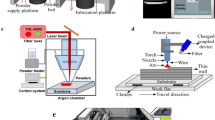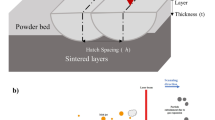Abstract
Alloy 718 has been utilized successfully in both static and rotating turbo machinery applications for four decades. The combination of high strength , fatigue capability, rupture strength , corrosion and creep resistance at temperatures through 650 °C are key attributes of this alloy. Conventional manufacturing routes include cast, wrought, sheet, joining and fabrication by welding and brazing, powder metallurgical processing and metal injection molding. Recent investigation of aerospace materials like Alloy 718 produced by additive manufacturing technology has provided an opportunity for disruptive component manufacturing methods, geometries, and component capabilities which expand design space for complex applications . At GE Aviation (GEA), development of laser powder bed direct metal laser melting (subsequently referred to as DMLM) Alloy 718 was a natural choice following the successful commercial application of DMLM CoCrMo in GE Aviation and Safran’s LEAP platform fuel tip component and the GE90 T25 sensor part. GEA’s DMLM 718 development started with demonstrator military applications , and now has expanded to include multiple commercial engine applications across the size range of the GEA product line. The additive (laser) process development for Alloy 718 involved a combination of laser processing parameter investigation and heat treatment development to produce both acceptable build geometry and metallurgical microstructures . Initial developments started with 20 μm build layer thickness, and expanded to 50 μm thicknesses for improved build productivity. From the onset, the materials engineering focus was on isotropic, fine grain, pore free and fully developed microstructures for Alloy 718 by heat treat design . Mechanical characterization included consideration of build direction, machine type, machine to machine variation and processing gas effects. This paper will discuss various metallurgical challenges and related, microstructure & mechanical characterization of DMLM Alloy 718 .
Access this chapter
Tax calculation will be finalised at checkout
Purchases are for personal use only
Similar content being viewed by others
References
Barker JF (1962) A superalloy for medium temperatures. Metals Prog 72–76
Schafrik R (2004) Gas turbine materials, part III. Advanc Mater Process 29–33
Radavich J (1989) The physical metallurgy of cast and wrought Alloy 718. In: Superalloy 718—metallurgy and applications, pp 229–240
Schafrik R et al (2001) Application of alloy 718 in GE aircraft engines: past, present, and next five years. In: Superalloys 718, 625 and various derivatives, pp 1–11
Gorelik M (2017) Additive manufacturing in the context of structural integrity. Int J Fatigue 94:168–177
Bidare P et al (2018) Fluid and particle dynamics in laser powder bed fusion. Acta Mater 142(1):107–120
Barretta S et al (2017) A comparison of fatigue strength sensitivity to defects for materials manufactured by AM or traditional processes. Int J Fatigue 94 178–1917
Popovich V et al (2017) Impact of heat treatment on mechanical behavior of Inconel 718 processed with tailored microstructure by selective laser melting. Mater Des 12–22
Ni M et al (2017) Anisotropic tensile behavior of in situ precipitation strengthened Inconel 718 fabricated by additive manufacturing. Mater Sci Eng A 344–351
Author information
Authors and Affiliations
Corresponding author
Editor information
Editors and Affiliations
Rights and permissions
Copyright information
© 2018 The Minerals, Metals & Materials Society
About this paper
Cite this paper
Kelkar, R., Andreaco, A., Ott, E., Groh, J. (2018). Alloy 718: Laser Powder Bed Additive Manufacturing for Turbine Applications. In: Ott, E., et al. Proceedings of the 9th International Symposium on Superalloy 718 & Derivatives: Energy, Aerospace, and Industrial Applications. The Minerals, Metals & Materials Series. Springer, Cham. https://doi.org/10.1007/978-3-319-89480-5_3
Download citation
DOI: https://doi.org/10.1007/978-3-319-89480-5_3
Published:
Publisher Name: Springer, Cham
Print ISBN: 978-3-319-89479-9
Online ISBN: 978-3-319-89480-5
eBook Packages: Chemistry and Materials ScienceChemistry and Material Science (R0)




